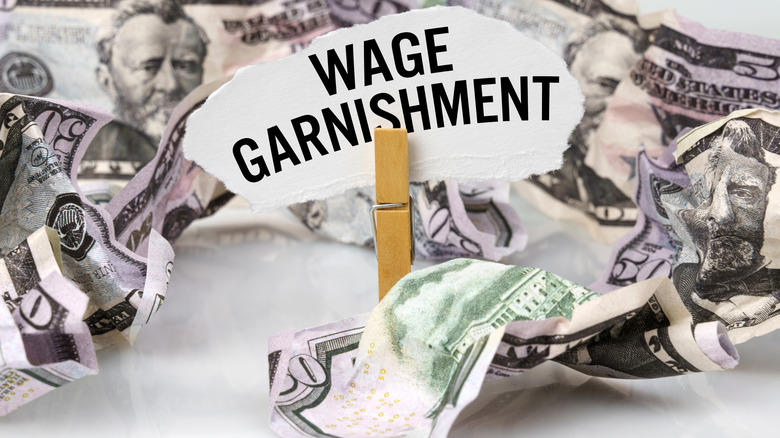The Trump Administration Will Start Garnishing Wages From These Americans
Living in America in 2025, under the second Trump presidency, is not easy. Along with other sweeping reforms, the Tax Foundation estimates that the passage of the Trump administration's "Big Beautiful Bill" will cost the federal government about $3.6 trillion — largely due to the extension of Trump's 2017 tax cuts for the wealthy. Meanwhile, the bill also cuts spending for food and healthcare programs by $1.3 trillion, according to a June 2025 report from the Congressional Budget Office.
However, another demographic of American is now also under threat of losing money thanks to Trump's bill — the millions of people who have defaulted on their student loans. While there are already consequences when you do not pay your student loans, the Trump administration is turning up the heat on these borrowers. For anyone hoping to potentially defer payments to a later date, or even perhaps have their balance entirely forgiven with a student loan forgiveness scheme, any options are now long gone. Instead, delinquent borrowers are now in danger of having their wages garnished.
The current state of student loan borrowers
While some ways of paying off your student loans can actually save you money, most borrowers face a tough job market right out of college, making it difficult to even start the repayment process. In May, 2025, Fortune reported that delinquency rates for student loan borrowers had soared beyond 20%. That meant that millions of Americans who had taken out loans to pay for college or higher education, had stopped making any payments towards their loans. In April, the Department of Education (DOE) calculated that there was $1.6 trillion worth of student debt in the U.S., owed by roughly 42.7 million Americans — over 5 million of which had been defaulting on their monthly payments for more than 360 days prior.
Additionally, the DOE reported that many of these defaulted loans had been unpaid for seven years or more, with 4 million qualifying as late-stage delinquency — meaning they had been delinquent between 91 and 180 days. As such, the DOE projected that nearly 10 million borrowers would default on their student loan payments by the end of 2025, resulting in 25% of the federal student loan portfolio going into default. Anyone who thought twice before aggressively paying off their student loans might now instead find themselves as one of the 5.3 million defaulted borrowers. The DOE released a statement that these borrowers can expect a notice from the Treasury Department regarding wage garnishment by the end of the summer.
What to do if you have your wages garnished
Now that the Trump administration is cracking down on those who have neglected payments, some borrowers will have to face the harsh reality of wage garnishment. The federal limit for wage garnishment per pay period is the lesser of either 25% of an employee's disposable earnings (your take home pay after all legally required deductions are made) or the amount at which an employee's disposable earnings are more than 30 times the federal minimum wage of $7.25 an hour, according to The U.S. Department of Labor.
Typically, federal student loan borrowers have several options for income-driven repayment plans that can bring down a borrower's monthly payment amount to a level a person can afford. However, delinquent borrowers can now expect to have around a quarter of their take home pay garnished. For anyone who is unable to lose that much income, setting up a meeting with a financial planner, or possibly even a bankruptcy lawyer, could help you set up a plan in which you can pay your debts while making ends meet in the process.


